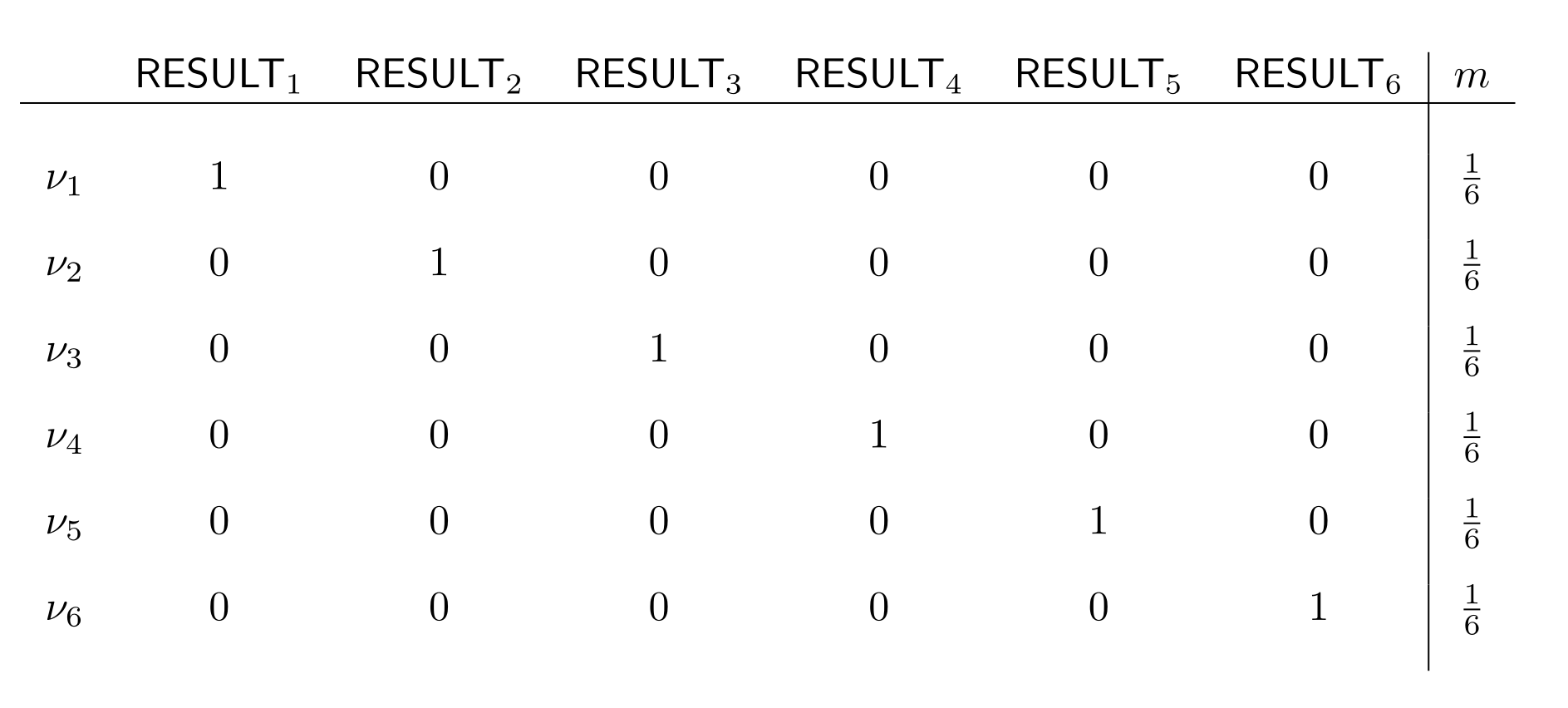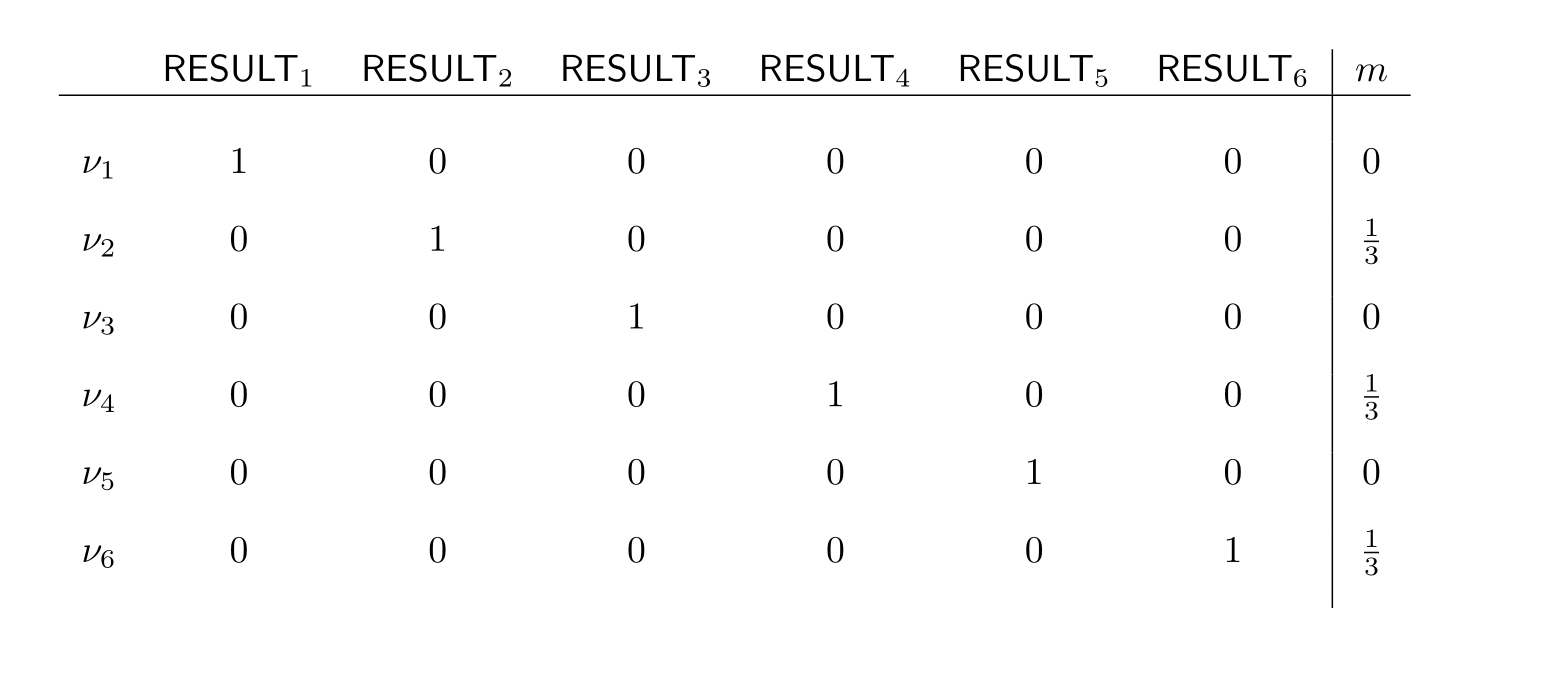Lecture 12. Logical learning
SlidesInfo
Here you can find the lecture slides.
Slides that are currently under development are locked. They will be unlocked in time for class.
You can use them to follow along during the lecture and to go through the material again after.
Feel free to ask questions during the lecture!!
Technical info
You can use the arrow keys to navigate through the slides, or alternatively, click the little arrows on the slides themselves.
Pressing the F-key while the slides are selected, puts them in fullscreen. You can quit fullscreen by pressing ESC.
There are more the slides can do, find out under https://revealjs.com/ .
∀I
Logical methods for AI
Lecture 12
Logical learning
This work is licensed under CC BY 4.0

-
Logic-based learning
Aim
- For last lecture: learning
- We understand this today as: how to respond to new facts.
- There are other concepts of logical learning, e.g. "data fitting."
- Some overlap.
Aim
- Two models:
- Deductive: belief revision
- Inductive: Bayesian updating
-
Belief revision
Setup
- Knowledge base: $\mathsf{KB}\subseteq \mathcal{L}$
- Deductive closure: $\mathsf{KB}\vDash A\Rightarrow A\in KB$
- Learn new fact: $A\notin \mathsf{KB}$. $$\text{Say}: \mathsf{RAIN}\notin\mathsf{KB}$$
- What to do?
Easy: no conflict
$$\neg\mathsf{RAIN}\notin\mathsf{KB}$$- Simply add $\mathsf{RAIN}$.
- $\mathsf{KB}+A=\Set{B:\mathsf{KB},A\vdash B}$
- Conservative: $$\mathsf{KB},A\vdash \mathsf{KB}$$ $$\mathsf{KB},A\vdash A$$
Harder: conflict
$$\neg\mathsf{RAIN}\in\mathsf{KB}$$- Problem: $\mathsf{KB}+\mathsf{RAIN}$ is inconsistent.
- Idea: "remove" $\neg\mathsf{RAIN}$.
- First approach: $$\mathsf{KB}-\neg A = \Set{B\in\mathsf{KB}:B\text{ not eqv. to }\neg A}$$ $$(\mathsf{KB}-\neg A)+A?$$
Problem
- Suppose: $$\mathsf{HIGH\_PRESSURE}\in\mathsf{KB}$$ $$\mathsf{WARM}\in\mathsf{KB}$$ $$\mathsf{HIGH\_PRESSURE}\land\mathsf{WARM}\to\neg\mathsf{RAIN}\in\mathsf{KB}$$
- Then: $$(\mathsf{KB}-\neg\mathsf{RAIN})+\mathsf{RAIN}\vdash \neg\mathsf{RAIN}$$
Worse
- By closure: $$\neg\mathsf{RAIN}\vdash \neg\mathsf{RAIN}\lor \bot\in\mathsf{KB}$$ $$\neg\mathsf{RAIN}\in\mathsf{KB}\Rightarrow\neg\mathsf{RAIN}\lor \bot\in\mathsf{KB}$$
- So: $$(\mathsf{KB}-\neg\mathsf{RAIN})+\mathsf{RAIN}\vdash \bot$$
- Even if we solved the first problem.
What to do?
- Which "grounds" to remove? $$\mathsf{HIGH\_PRESSURE}\in\mathsf{KB}$$ $$\mathsf{WARM}\in\mathsf{KB}$$ $$\mathsf{HIGH\_PRESSURE}\land\mathsf{WARM}\to\neg\mathsf{RAIN}\in\mathsf{KB}$$
- Which consequences to remove?
AGM Axioms
- $\mathsf{KB}\ast A$ is always deductively closed
- $A\in \mathsf{KB}\ast A$
- $\mathsf{KB}\ast A\subseteq \mathsf{KB}+A$
- If $\neg A\notin\mathsf{KB}$, then $\mathsf{KB}\ast A=\mathsf{KB}+A$
- $\mathsf{KB}\ast A$ is only inconsistent if $A$ itself is
- If $A,B$ are logically equivalent, then $\mathsf{KB}\ast A=\mathsf{KB}\ast B$
- $\mathsf{KB}\ast(A\land B)\subseteq (\mathsf{KB}\ast A)+B$
- If $\neg B\notin\mathsf{KB}\ast A$, then $(\mathsf{KB}\ast A)+B\subseteq \mathsf{KB}\ast(A\land B)$
Outlook
- Aim: define revision operator $\ast$.
- Problem: many different options.
- "Best" revision depends on the world, subject matter, $KB$-external knowledge, ...
-
Bayesian updating
Setup
- Knowledge base: $Pr_\mathsf{KB}:\mathcal{L}\to\mathbb{R}$
- Learn new fact $A$: $Pr_\mathsf{KB}(A)\neq 1$.
- "Learnable" fact: $Pr_\mathsf{KB}(A)\neq 0$.
- What now?
Solution
$$Pr_{\mathsf{KB}\ast\mathsf{RAIN}}(\ \cdot\ )=Pr_\mathsf{KB}(\ \cdot \mid \mathsf{RAIN})$$ $$\text{Learn}: \mathsf{RESULT}_2\lor\mathsf{RESULT}_4\lor \mathsf{RESULT}_6?$$
$$\text{Learn}: \mathsf{RESULT}_2\lor\mathsf{RESULT}_4\lor \mathsf{RESULT}_6?$$

Bayes rule
$$Pr(A\mid B)=\frac{Pr(B\mid A)\times Pr(A)}{Pr(B)}$$- $Pr(A\mid B)$ is the posterior probability
- $Pr(A)$ is called the prior probability
- $Pr(B)$ is called the marginal probability
- $Pr(B\mid A)$ is called the likelihood
Example
$$\mathbf{Marginal}: Pr_\mathsf{KB}(\mathsf{RAIN})=0.25$$ $$\mathbf{Likelihood}: Pr_\mathsf{KB}(\mathsf{RAIN}\mid \mathsf{HIGH\_PRESSURE})=0.2$$ $$\mathbf{Prior}: Pr_\mathsf{KB}(\mathsf{HIGH\_PRESSURE})=0.8$$ $$\mathbf{Posterior}: Pr(\mathsf{HIGH\\_PRESSURE}\mid\mathsf{RAIN})$$ $$=\frac{Pr(\mathsf{RAIN}\mid \mathsf{HIGH\_PRESSURE})\times Pr(\mathsf{HIGH\_PRESSURE})}{Pr(\mathsf{RAIN})}$$ $$=\frac{0.2\times0.8}{0.25}=0.64$$Applications
- From text recognition to spam filters.
- Not efficient: need to recalculate all probabilities every time.
-
Conclusion
Conclusion
- Three roles of logic:
- Foundational
- Methodological
- As a tool
- Not the main method (anymore), but everywhere.
- You now know how this works, abstractly.

